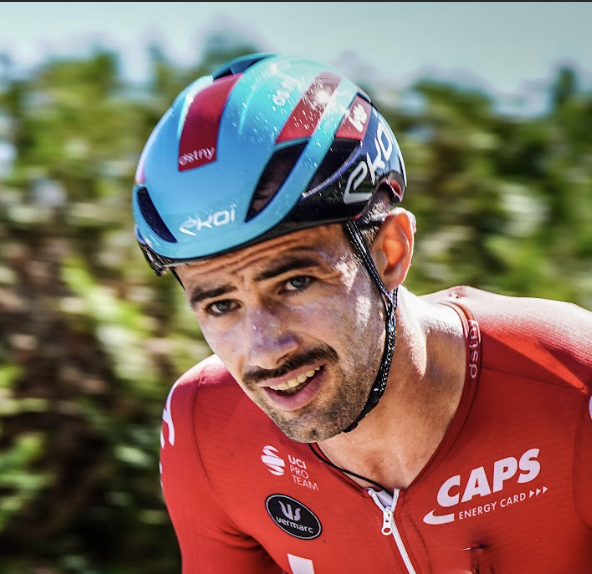
Victor's headline numbers
Victor's strategy
Fueling
Carbohydrate is the main fuel you burn when racing. Failing to fuel properly is a leading cause of underperformance in longer races.
During a three-week Grand Tour, it’s not easy to achieve full glycogen stores, but Victor did a decent job of replenishing his losses from the previous stage by eating carb-rich meals the night before and on the morning of Stage 18. Before he got to the start line, Victor took a PF 30 Gel to top off his stores, before regularly consuming more gels throughout the race. As the intensity increased, he incorporated some additional carbs throughout his intake with PF 30 Gels, Carb Only Drink Mix and Carb & Electrolyte Drink Mix, which helped him maintain a high carb intake, averaging over 130 grams per hour. Victor’s extensive practice with gut training has ensured he can comfortably tolerate a high sustained intake of carbs during his races, helping him spare glycogen and get him across the finish line in first place (along with some particularly good race craft at the finish line). Victor was highly critical of his fueling plan and disappointed to miss out on a key bidon he did not place himself well so another rider was in the way of Victor’s soigneur as the break was forming. He decided to make the break and was able to catch up on some of his lost fuel by picking up a gel (with 30g of carb) from another team’s soigneur and a water bidon to get him through to the next PF&H feed zone. Additionally, Victor consistently engages in heat training which when combined with gut training, helps train his body to process high intakes of carb both in the heat and at high intensities.
Hydration
Taking on board an appropriate amount of fluid and sodium is essential to maintaining blood volume and supporting the cardiovascular effort needed to perform on race day.
Whilst the absolute amount of sodium and fluid consumed per hour is important, it’s critical to consider these in relation to each other. This is known as 'relative sodium concentration' and it’s expressed in milligrams per litre (mg/L). How much sodium you’re taking in per litre of fluid is more important than the absolute amount taken in per hour.
Sweat sodium concentration (mg/L) is largely genetically determined and remains relatively stable. Knowing how salty your sweat is enables you to replace a good proportion of your sweat losses, which can range from 200-2,000mg/L.
Whilst Victor’s losses are on the moderate side, getting his hydration strategy right is still crucial when it’s hot and/or humid as his higher sweat rate in these conditions can result in significant net losses over the duration of a race.
Learn moreWith Victor's experience in racing he naturally gravitates to his well thought out hydration plan of aiming for ~three bidons per hour, and adjusts this during the race based on the conditions and intensity on the day. The Stage prior was an easier day where he felt well hydrated both during and after that stage, and therefore suggested that his sleep quality the night before was incredible. On the morning of the race, he pre-loaded with PH 1500 to maximise his hydration status. When he missed the Carb & Electrolyte Drink Mix, he only had access to a bidon with water which “wasn’t ideal” as it diluted the relative sodium concentration he took on. Victor might consider taking a small amount of Electrolyte Capsules with him during future hot and intense races as a backup in similar situations.
Caffeine
Beyond the Three Levers of Performance (carb, sodium and fluid), caffeine is one of only a few substances that is proven to improve performance for most endurance athletes as it can help stave off mental and physical fatigue.
As is typical for World Tour professionals, Victor didn’t take any caffeine on board prior to or early on in the race. This strategy has worked well for Victor in the past and he implemented this here with great effect. During the stage, Victor consumed a caffeine dose just shy of the caffeine guidelines for a performance advantage, during a race of this intensity, through PF 30 Caffeine Gels. This helped to support his energy levels to make the break, and ultimately secure a coveted Tour de France victory.
How Victor hit his numbers
Here's everything that Victor ate and drank on the day...
Victor's weapons of choice
Final thoughts
Victor's full stats
Data Confidence?
There is an adequate level of accuracy in the data collected and the numbers reported. The athlete manages to recall what they ate and drank including most specifics (brands flavours quantities plausible estimations of volumes). However there are estimations made within the data which affect the overall confidence level in the data reported.